Farms on the Fringe: New Takes on America’s Farming Tradition
These six farmers have found innovative ways to grow plants in today’s climate, whether in corn country or coal country, with fish tanks or smartphones.
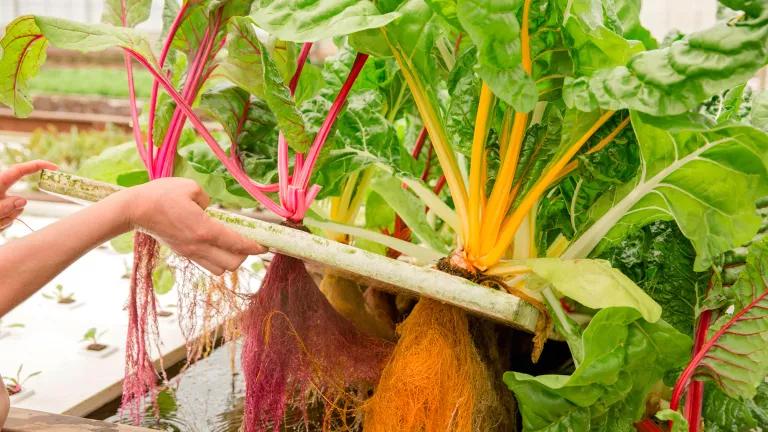
Chard grown in Ouroboros’s aquaponics system reveals its colorful roots.
How do you feed a hotter, drier, more inequitable world? A new generation of American farmers are coming up with answers that rarely resemble the cornstalks and cattle pens of mainstream agriculture.
Today’s American farmers are less white. They’re also increasingly experimental. Even as our biggest farms get bigger, small producers are innovating in countless ways as they grapple with the serious questions that face our food system. Some prioritize making high-quality food affordable to folks on minimum wage and accessible in places where fresh produce is scarce; others are learning how to farm with far less water on drought-prone fields. They may be discovering hidden super fruits, reinvigorating coal country, or bringing urban farming to the mountains. Here are six who will change your mind about what it means to farm.
Fish Farming on Dry Land
Ouroboros Farms
Half Moon Bay, California
When the recent six-year drought hit California, most farmers were screaming for water. Here’s one who wasn’t: Ken Armstrong, owner of Ouroboros Farms in the Bay Area. And that is more than a little strange—because for Armstrong, water is actually a growing medium. He specializes in aquaponics, a system of raising fish and vegetables in tandem.
Armstrong founded the farm in 2012 after watching a YouTube video about Will Allen, a MacArthur Grant–winning urban farmer in Milwaukee. Inspired, he gathered some potential partners and attended a four-day workshop in Florida, then went home and got to work. Today, Ouroboros’s greenhouses sit on a sliver of land, just one-third of an acre. Nutrient-rich water from the farm’s 9,000 gallons of fish tanks circulates out through neighboring “raft beds,” which hold floating frames with sprouting greens whose roots are suspended in water, and through “medium beds,” which use clay pebbles to filter and disperse water for the vegetables. The roots take up the nitrogen from the fish, and clean water circulates back into the tanks.
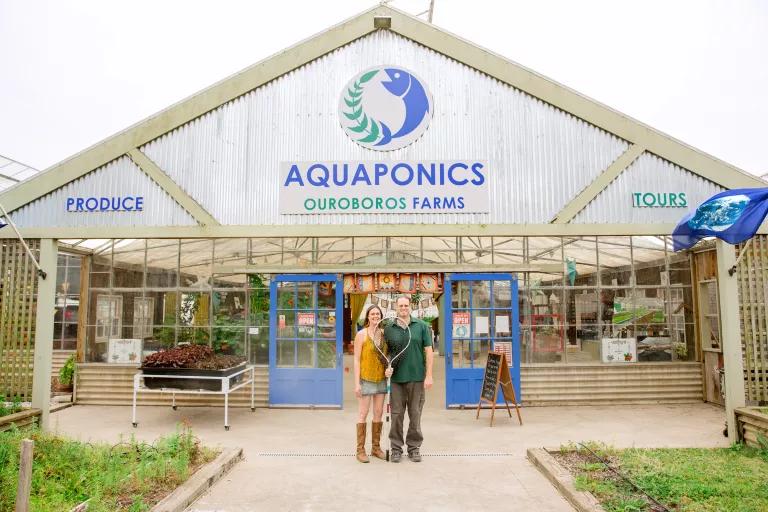
The system, says Armstrong, produces mature lettuce more quickly than soil planting and uses less water, too. The monthly output of 12,500 heads of lettuce requires about 8,000 gallons of water—a little less than two-thirds a gallon per head, as opposed to 12 gallons on traditional California farms. And output is constant, allowing his fraction of an acre to match the annual production of five acres of soil.
Armstrong says he launched Ouroboros to prove that the method could work commercially. He sells greens and other vegetables to local restaurants, and an on-site farm stand offers direct sales, with salad mix going for $4 to $5 for an 8-ounce bag. He also hosts training programs and farm tours and consults with new growers looking to run commercial aquaponics operations.
“Being able to bring high-quality, nutritious food closer to urban areas is going to be one of the agricultural paradigm shifts for the future,” he says. “I think more and more it’s going to be popping up.”
Mountainside Urban Farming
Tassinong Farms
Crested Butte, Colorado
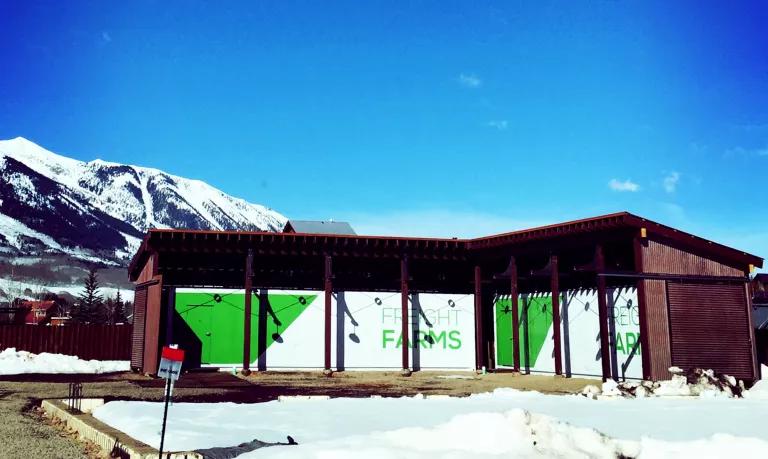
Local food in Crested Butte, Colorado, has long been a summer-only affair. For residents, there has been little choice in the matter: tucked into the Rocky Mountains at 8,900 feet, Crested Butte doesn't exactly offer optimal growing conditions. Its night temperatures drop below freezing nine months of the year. But Kate Haverkampf saw a way around this obstacle. She launched Tassinong Farm, a year-round hydroponic facility housed in repurposed shipping containers, in December 2015. “It was such a difficult task to get fresh local food year-round,” says the former tech consultant. When her husband, who works in logistics, ran across a story about farming in containers, she was sold: “I just decided to make that my job.”
Inside four containers, which Haverkampf bought from a supplier aptly known as Freight Farms, LED lights illuminate shelves of plants rooted in a growing medium made from recycled plastic bottles. With a smartphone-enabled tracking system, Haverkampf can monitor her crops closely. If the nutrient mix gets out of balance in the irrigation water, she can swipe and tap to fix it, even from across the country. Because there is no soil, there is no need for herbicides to control weeds. There’s little need for pesticides, either, in this tightly controlled indoor growing space. Haverkampf’s biggest cost is electricity—the lights run 18 hours a day—so this year she’s exploring her options for solar.
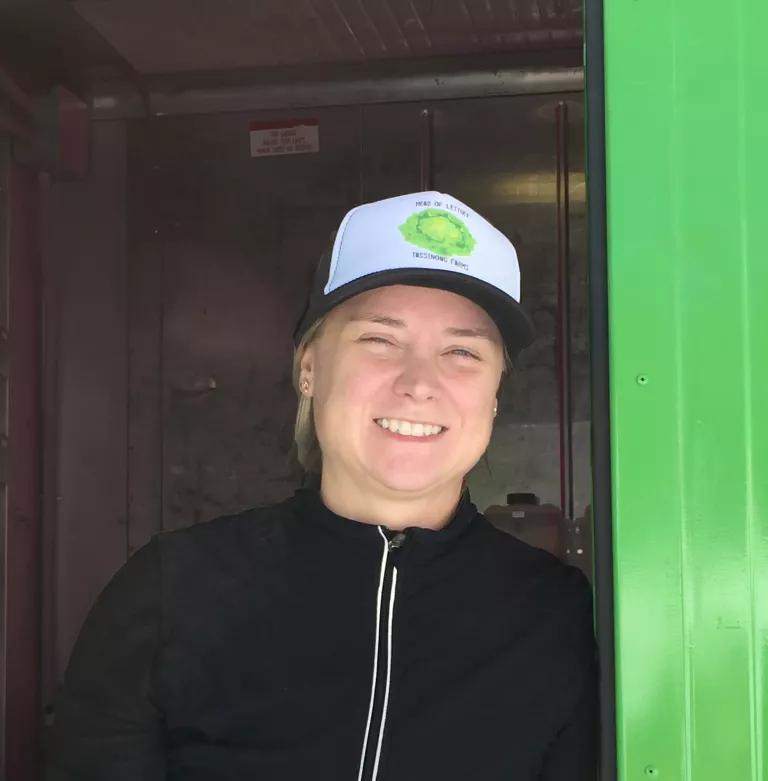
Perhaps most important for an arid place like Colorado, water usage is minimal. Agriculture accounts for 80 percent of water usage in the United States, and a typical pound of lettuce requires 34 gallons of water. At Tassinong, says Haverkampf, each container uses about 15 gallons a day—roughly equivalent to a quick shower―or 105 gallons weekly. At peak, this turns into about 60 pounds of greens a week—less than 2 gallons per pound.
Today the shipping containers churn out greens ranging from lacinato kale and purple spinach to romaine lettuces and lemony sorrel. They end up in salads and atop burgers at five local restaurants and are sold at a local food co-op. Haverkampf also takes individual online orders, and later this summer she’s opening a farm stand.
“I’m trying to prevent all of these miles and miles of driven produce,” Haverkampf says. With the new shop, “I like to think that people will come more often and know they can get their greens when they need them.”
Superfruit in the Heartland
Sawmill Hollow
Missouri Valley, Iowa

If you think about the typical Iowa farm, you might picture rows of corn and soy; the state leads the nation in both. But Andrew Pittz, a sixth-generation Iowa farmer, is not typical. At his family’s Sawmill Hollow Farm, the fields are covered with certified organic aronia berries.
The project began in the 1990s, when Pittz’s mom and dad decided to branch out from the corn and soy both their parents had grown and began cultivating a berry farm. When Andrew graduated from Texas A&M with an agricultural degree and a passion for organic farming, he returned to the family homestead on the rolling hills of the Missouri Valley with a vision: he wanted to be part of “a rural renaissance, and create more farmers,” he says. To do that, he knew, he’d need to grow crops that both yield income and preserve land.
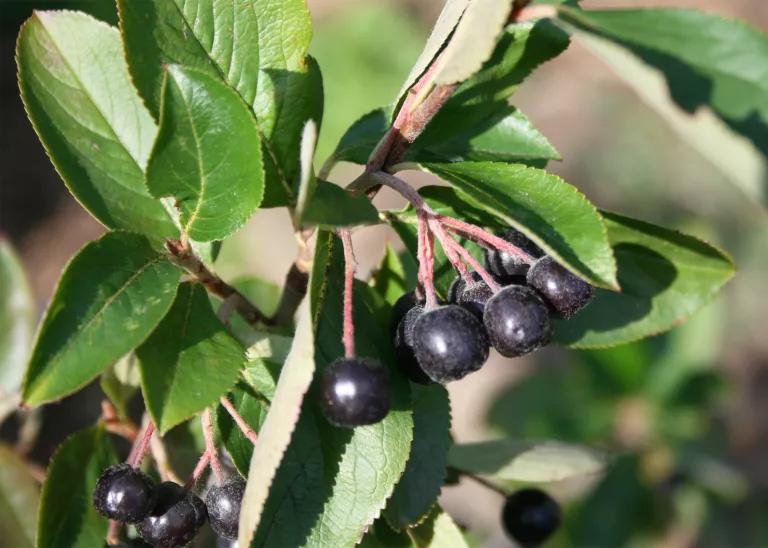
The key to specializing in aronia, says Pittz, has been figuring out how to market the berries, which are highly astringent and bitter when fresh. The farm sells aronia jelly and syrup, aronia salsa, and even a spiced meat marinade, sold online and during on-site events like an annual Aronia Berry Festival. The berries also have one of the highest antioxidant ratings of any fruit, according to the Journal of Agriculture and Food Chemistry, making them desirable to consumers enthusiastic about so-called superfoods (a designation, it must be noted, met with less enthusiasm by health experts).
But above all, says Pittz says, he’s chosen to stick with aronia because it makes sense for the environment. The plant is native to Iowa and grows readily on his farm without irrigation. Between the bushes, a carpet of native grasses fixes nitrogen in the soil and boosts yield, limiting the need for chemicals. It’s a winning combination for the local turf, which is made of fertile but highly erodible soil called loess. Pittz points out that farmers planting annual grain crops like corn inadvertently increase erosion each time they pull out plants, turn over fields, and replant. Aronia berries, on the other hand, are perennials, so both the roots and the soil around them stay put.
And that, says Pittz, sums up his favorite trait of the aronia berry: “It is meant to grow here.”
Planting Justice
Soul Fire Farm
Grafton, New York

Rocky hillsides don’t get much play in agricultural daydreams. But when Leah Penniman and Jonah Vitale-Wolff laid their eyes on the thin, rock-strewn soil of Grafton, just outside Albany, New York, they decided to go all in. They applied soil remediation methods they had learned on urban farms and began contouring the hillside, removing rocks, planting crop rows, and even building a house. Five years later, in 2011, they opened shop at Soul Fire Farm, a CSA-only family farm focusing on environmental justice and supporting Albany’s low-income communities of color. They look beyond Albany, too, and run an agricultural training workshop, the Black and Latinx Farmers Immersion, which draws aspiring farmers of color from around the country.
Soul Fire’s CSA offers its 100 customers weekly one-bushel boxes selected from the farm’s 70 crops, which include beets, cucumbers, squash, corn, tomatoes, and peppers, among other veggies. All are grown without synthetic chemicals, and the farmers rely on compost to boost productivity, says Penniman. At the heart of the program is a careful sliding fee scale that can drop as low as zero for struggling families, and a doorstep delivery service to make sure everyone has easy access.

That focus on accessibility comes in part from personal experience. When Leah and Jonah’s two children were very small, the family lived in a neighborhood where getting high-quality, fresh food meant walking to a farm CSA a couple of miles away. It was, says Leah, “really unfair as an expectation [of what was necessary] to feed families well.” So when the time came to start their own CSA, Penniman and Vitale-Wolff made access a priority.
Many of the couple’s customers share that concern. Francine Godgart, a married mother of two who works at the local hospital, chooses to pay extra every week to keep the costs down for low-income members. “It’s very expensive to eat organically,” she says. “I think it’s important for people who don’t have those resources to be able to be included.”
Re-energizing Coal Country
Tree of the Field/Pumpkin Vine Creek Farm
Paint Lick, Kentucky

The hilltops of Kentucky have seen some tough times. More than 500 mountaintop removal sites dot the state’s Appalachian landscape, bringing with them a host of environmental problems: increased dust and toxins, contaminated water, and buried streams. And now that coal is on its way out, questions arise: How do you deal with all that degraded land? And is there a way for residents to make a living off it?
One entrepreneurial farmer, Robin Richmond Mason, has an answer: kenaf, a relative of hemp, okra, and cotton. Native to Africa, the plant has long been used for its fibers and is already cultivated in several states. Moreover, Mason says, it’s unlikely to spread, kudzu-like, since a shorter growing season means that it is harvested, or dies, before it goes to seed.
Working with researchers at a local commercial lab, Mason discovered kenaf is a potent source of fuel, burning longer and hotter than conventional firewood—a bonus in rural areas, where wood heat is common. (In 23 Kentucky counties, more than 10 percent of homes rely on wood heat, according to statistics from the state’s Energy and Environment Cabinet.) One log of firewood tops out at 4,800 BTUs and burns for two or three hours, but a log made of compressed kenaf silage, Mason says, can provide 7,500 BTUs and will burn for four hours. The firewood alternative also helps ease the pressure on standing forests wrought by the harmful biomass industry.

Mason wants the mountaintop removal sites “to be restored to Eden” and sees kenaf as an initial way to boost plant life there. “Let’s work toward the very best possible remediation plan. But unless there is economic motivation, I don’t see those developing.”
Last year’s initial run—farmed on an ex-miner’s land and hauled out by a trucker who worked for years with coal—was so successful that this year Mason has expanded to four growing sites across Kentucky. The biggest is at a former tobacco farm in the central part of the state that has dedicated 100 acres to kenaf. Judging by the yield from prior test plantings, Mason expects about five tons per acre. All of it will feed into Mason’s line of Tree of the Field products, including a sextet of logs sold with matches and instructions. She calls it a Fiber Flame Pit Kit, and it’s currently being sold in local Whole Foods stores.
Old Farm, New Tricks
Santa Cruz Farm and Greenhouses
Española, New Mexico
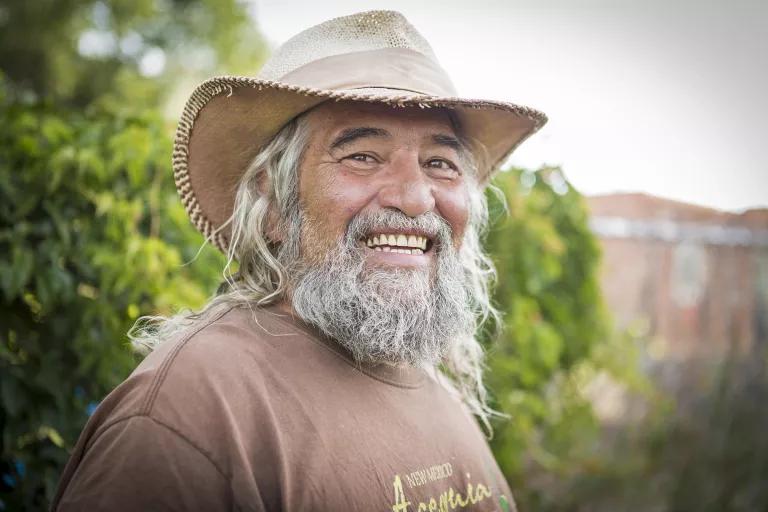
There aren’t many farmers in the United States who can lay claim to their land the way Don Bustos can. His family’s been farming a patch of New Mexico for three centuries, and today he and his nephew still use the ancient community system of water ditches, called acequias, to feed their crops. And just as his parents did before him, much of what Bustos grows is sold within a 25-mile radius of his farm. But those traditions are only a foundation for this most modern of family farmers.
When Bustos left a construction career to return to the farm in the 1980s, the easy choice was to grow the staples that his parents had grown: crops like corn, potatoes, chilies, and squash. Instead he decided to try something different and set his sights on high-value organic crops, aimed at farmer’s markets and public schools. He began transforming his humble inheritance—three and a half acres across the road from a desolate stretch of federal public land—into something not just environmentally, but also financially, sustainable.

Today Bustos grows nearly six dozen varieties of fruits and vegetables year-round using a series of low-tech greenhouse structures, known as hoop houses, and a solar water heater. In any given month, it might be arugula or strawberries, salad mix or green chilies. Going solar, he says, made a huge difference in his livelihood. Not only did his energy costs plummet, from $750 a month to 7 cents a day, but the hoop houses “let us create income 12 months a year instead of trying to risk everything for 3 or 4 months.”
His market savvy has helped earn Bustos wide acclaim, including a 2015 James Beard Foundation Leadership Award. He’s also been recognized for his passionate activism on behalf of small and sustainable farmers who fall outside the conventional image of American growers. Bustos has advocated for female farmers and farmers of color in both Washington, D.C., and New Mexico; created a farmer training program that also connects small growers with public school cafeterias; and supported the state’s acequia system, which dates from the 1600s.
That history, says Bustos, is part of what makes New Mexico, where nearly one-third of farmers are Hispanic, special. “We’re not inventing anything new,” he says, with regard to his growing practices and local base of customers. “That’s all been done by our ancestors."
This article was made possible by a grant from the Jonathan & Maxine Marshall Fund for Environmental Journalism.
This article was originally published on onEarth, which is no longer in publication. onEarth was founded in 1979 as the Amicus Journal, an independent magazine of thought and opinion on the environment. All opinions expressed are those of the authors and do not necessarily reflect the policies or positions of NRDC. This article is available for online republication by news media outlets or nonprofits under these conditions: The writer(s) must be credited with a byline; you must note prominently that the article was originally published by NRDC.org and link to the original; the article cannot be edited (beyond simple things such grammar); you can’t resell the article in any form or grant republishing rights to other outlets; you can’t republish our material wholesale or automatically—you need to select articles individually; you can’t republish the photos or graphics on our site without specific permission; you should drop us a note to let us know when you’ve used one of our articles.

For Thousands of Years, Indigenous Tribes Have Been Planting for the Future
Latina Farmworkers Speak Out about the Hazards of Life in California’s Fields
The Chlorpyrifos Ban Is a Win for Science—and Children